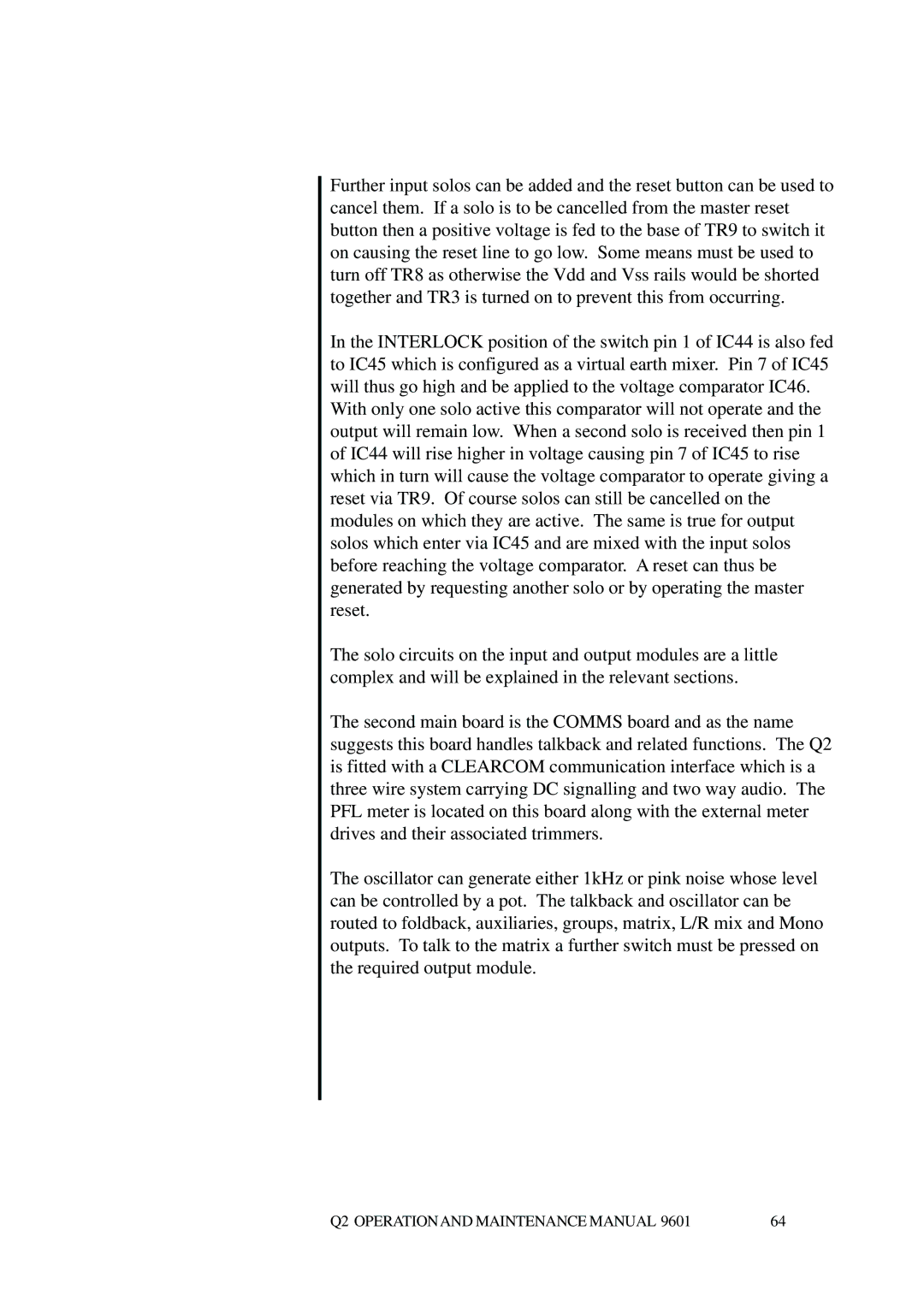Further input solos can be added and the reset button can be used to cancel them. If a solo is to be cancelled from the master reset button then a positive voltage is fed to the base of TR9 to switch it on causing the reset line to go low. Some means must be used to turn off TR8 as otherwise the Vdd and Vss rails would be shorted together and TR3 is turned on to prevent this from occurring.
In the INTERLOCK position of the switch pin 1 of IC44 is also fed to IC45 which is configured as a virtual earth mixer. Pin 7 of IC45 will thus go high and be applied to the voltage comparator IC46.
With only one solo active this comparator will not operate and the output will remain low. When a second solo is received then pin 1 of IC44 will rise higher in voltage causing pin 7 of IC45 to rise which in turn will cause the voltage comparator to operate giving a reset via TR9. Of course solos can still be cancelled on the modules on which they are active. The same is true for output solos which enter via IC45 and are mixed with the input solos before reaching the voltage comparator. A reset can thus be generated by requesting another solo or by operating the master reset.
The solo circuits on the input and output modules are a little complex and will be explained in the relevant sections.
The second main board is the COMMS board and as the name suggests this board handles talkback and related functions. The Q2 is fitted with a CLEARCOM communication interface which is a three wire system carrying DC signalling and two way audio. The PFL meter is located on this board along with the external meter drives and their associated trimmers.
The oscillator can generate either 1kHz or pink noise whose level can be controlled by a pot. The talkback and oscillator can be routed to foldback, auxiliaries, groups, matrix, L/R mix and Mono outputs. To talk to the matrix a further switch must be pressed on the required output module.
Q2 OPERATIONAND MAINTENANCE MANUAL 9601 | 64 |
